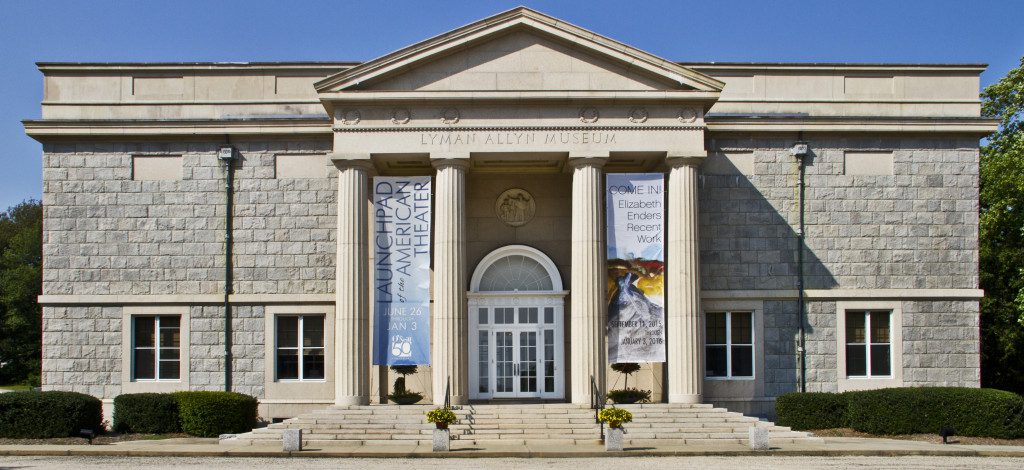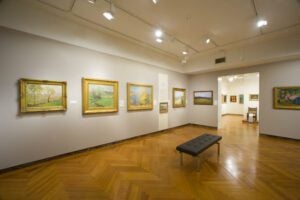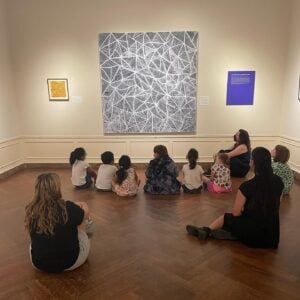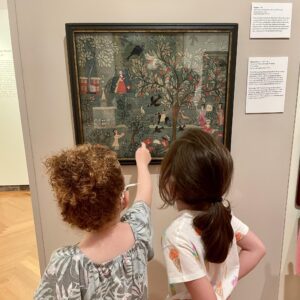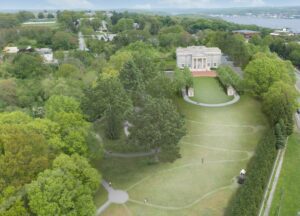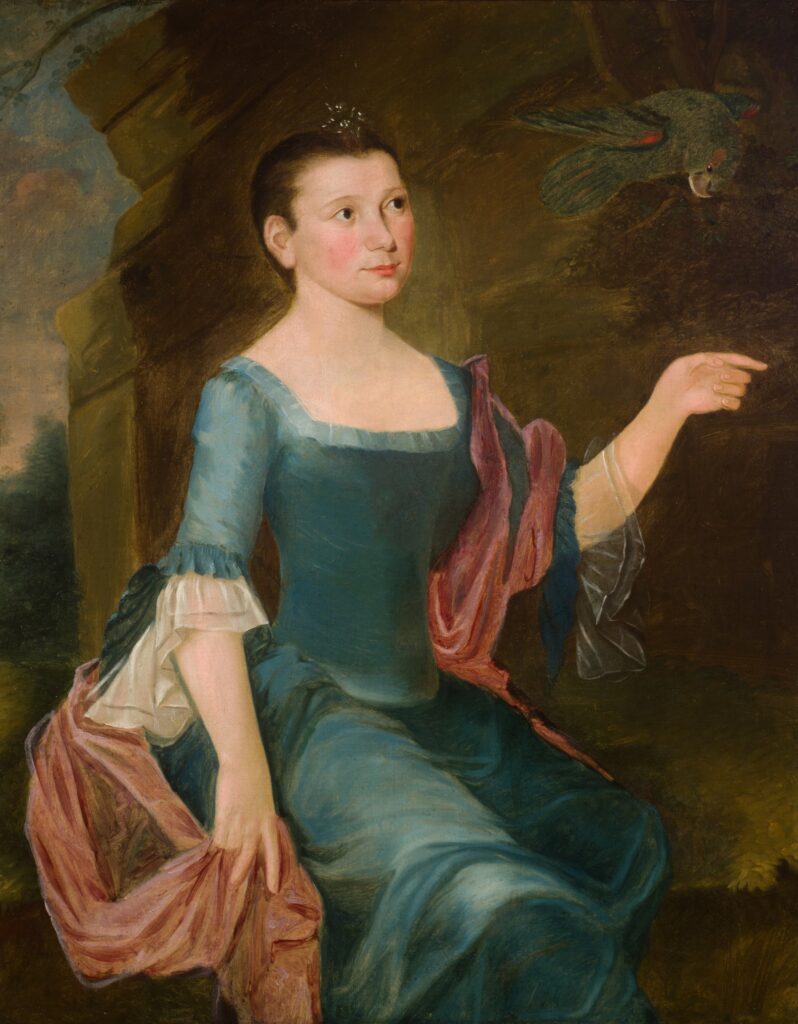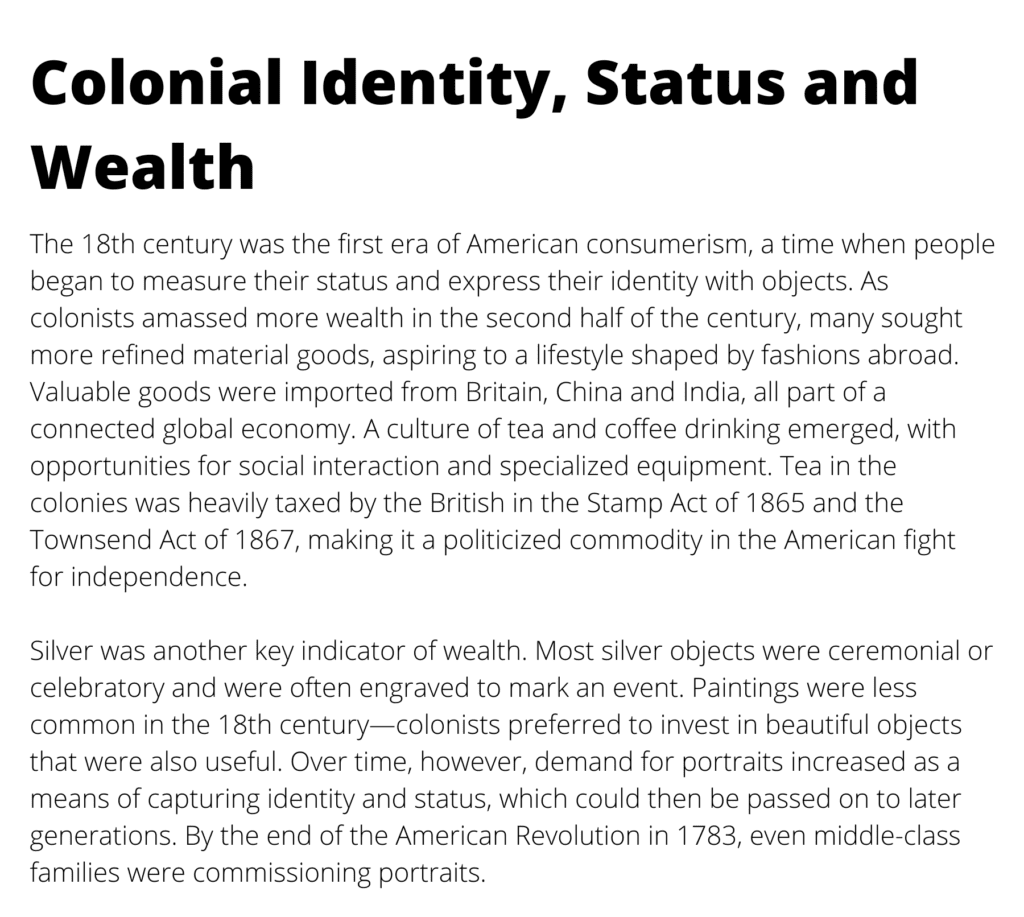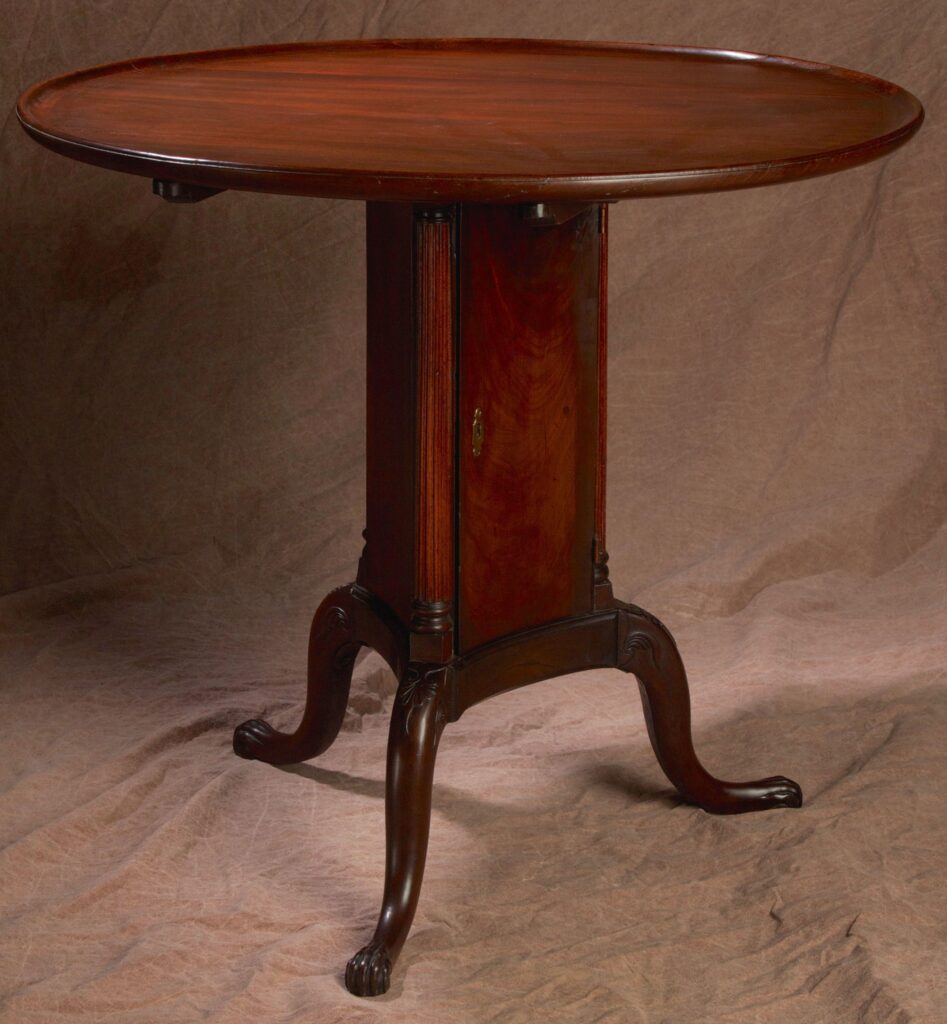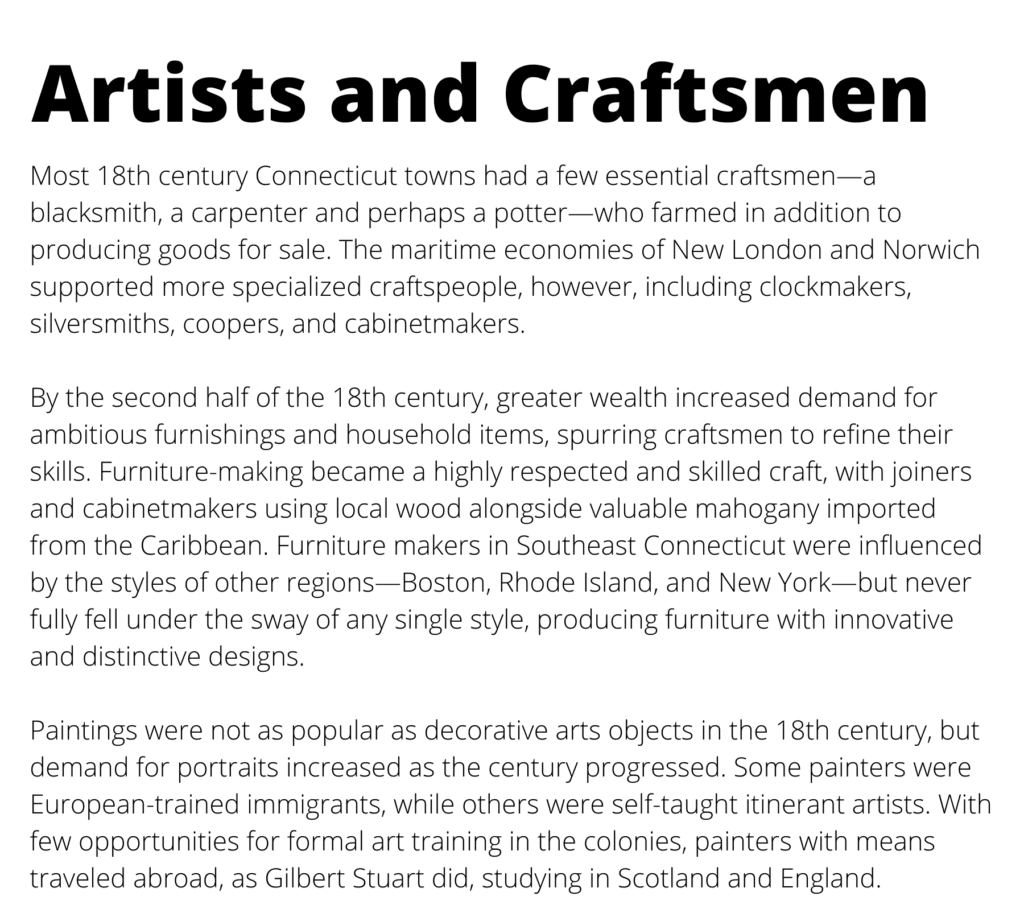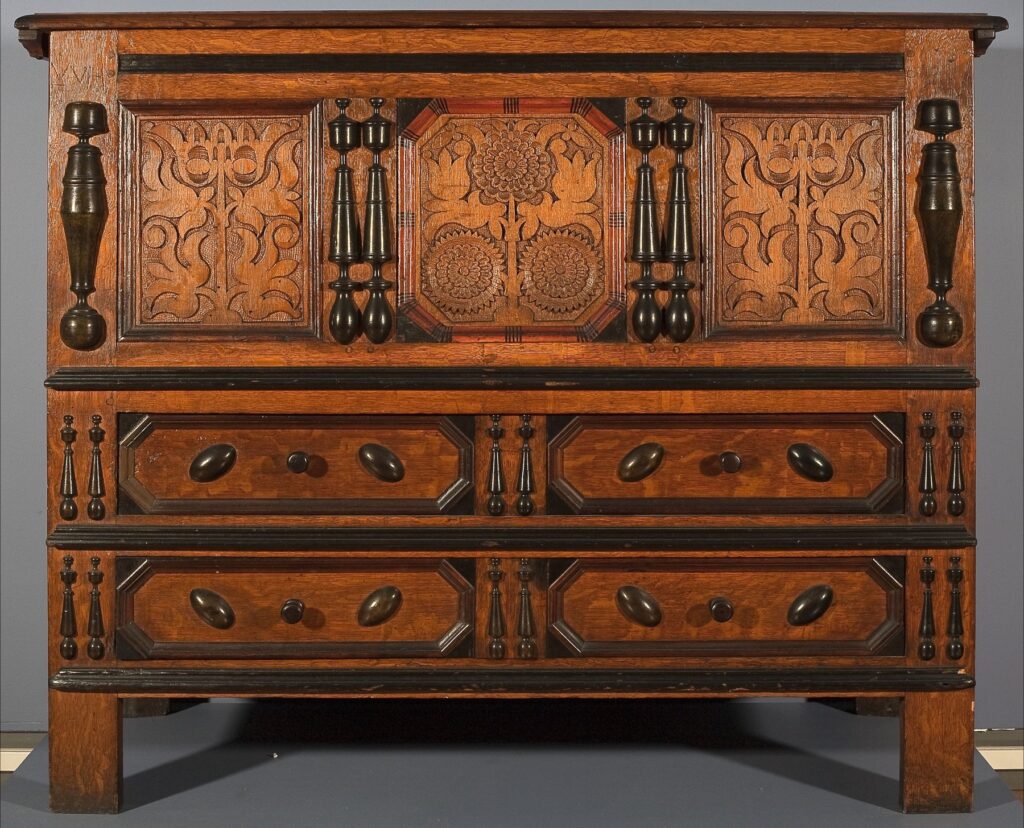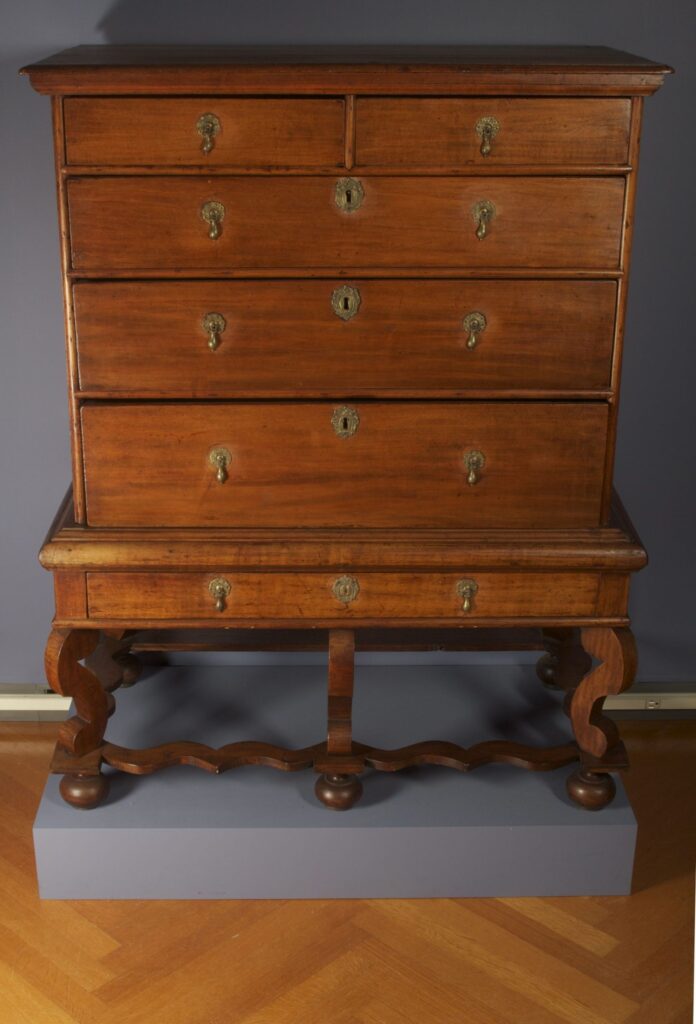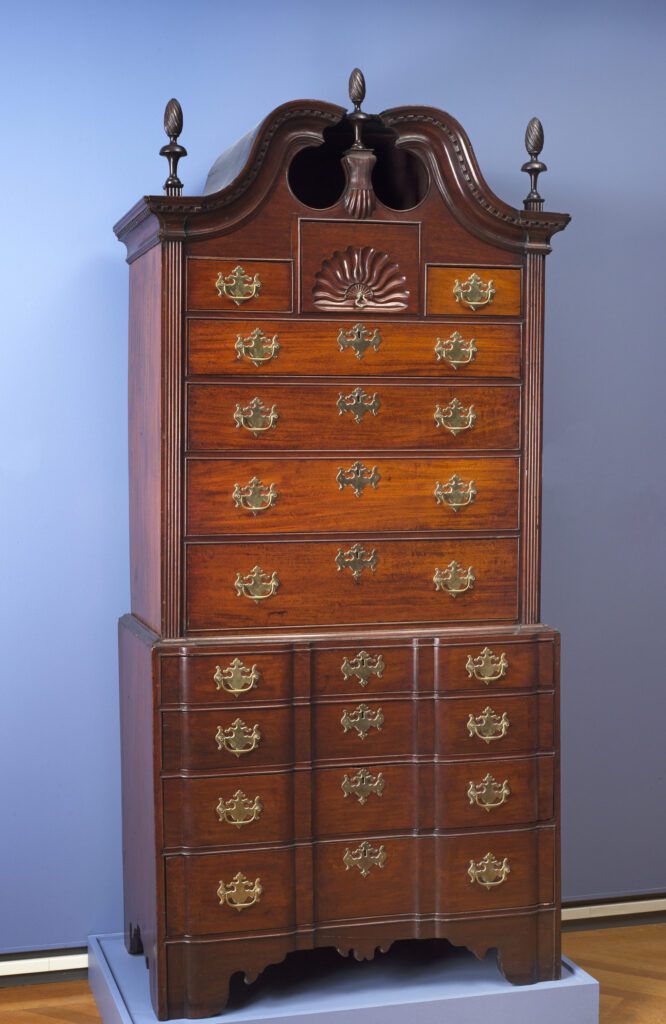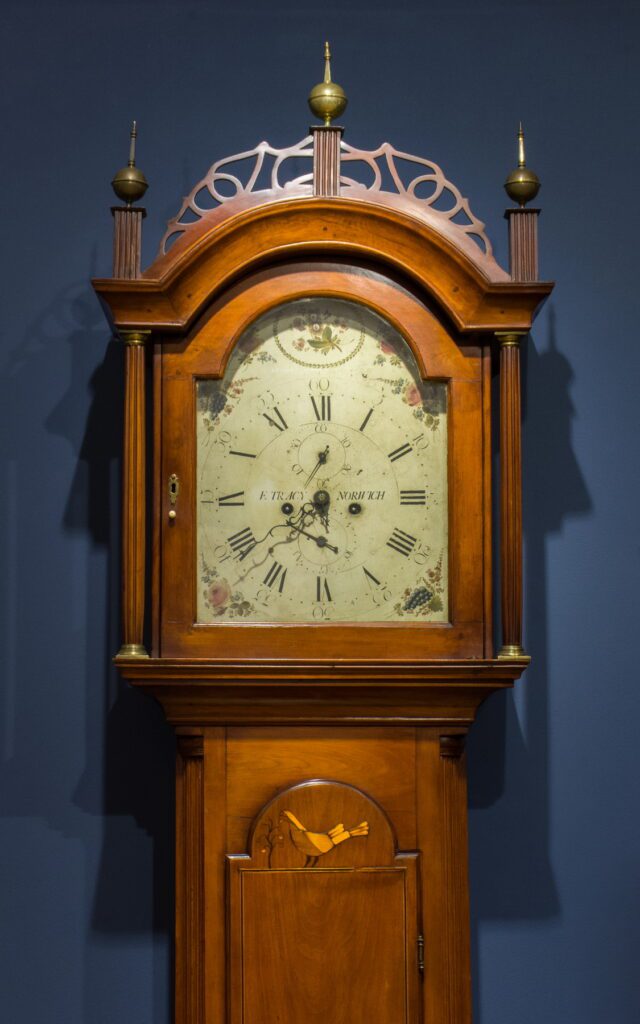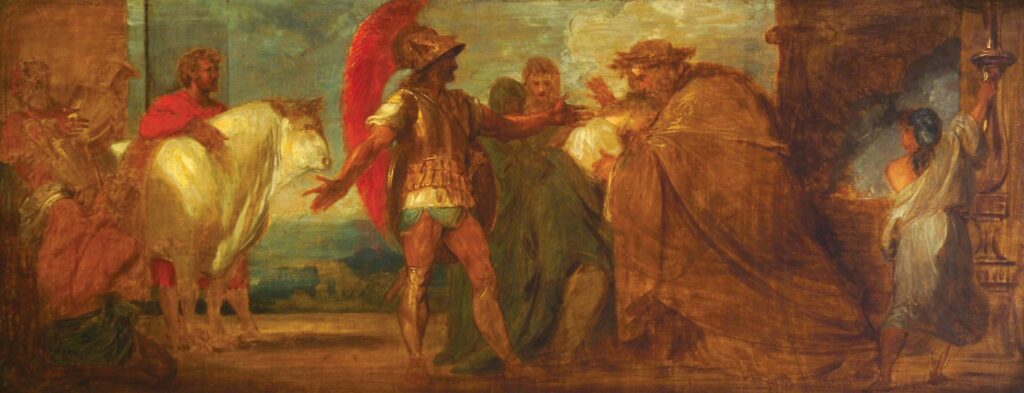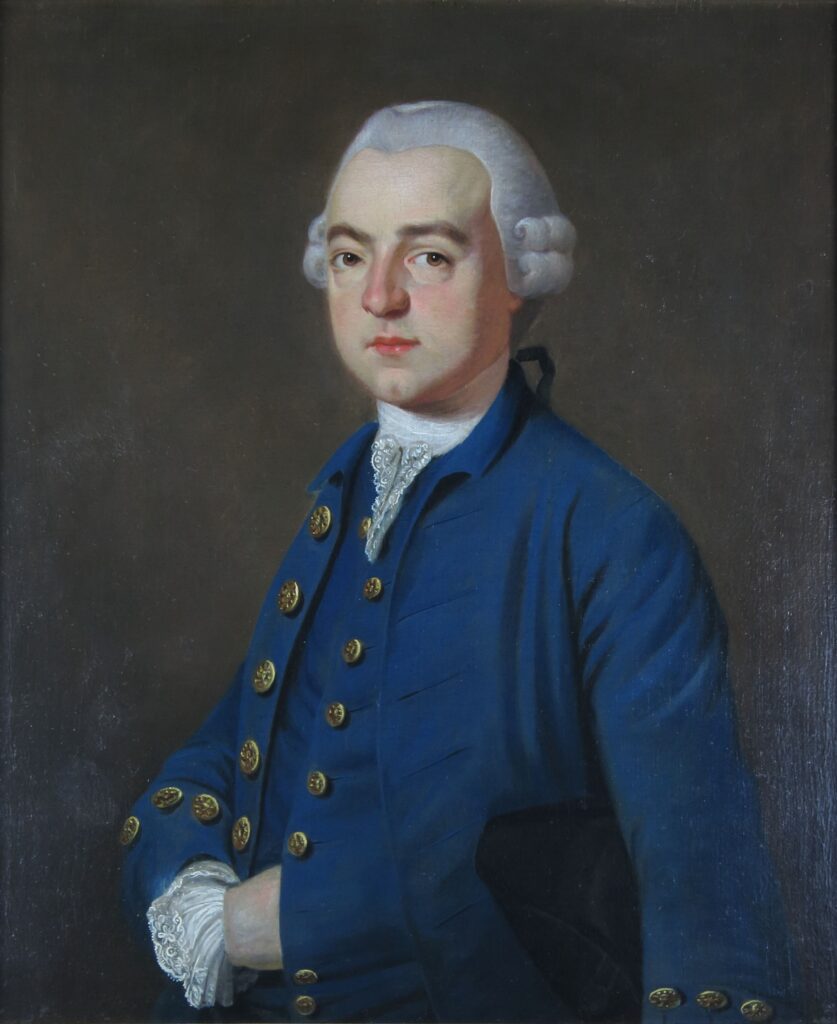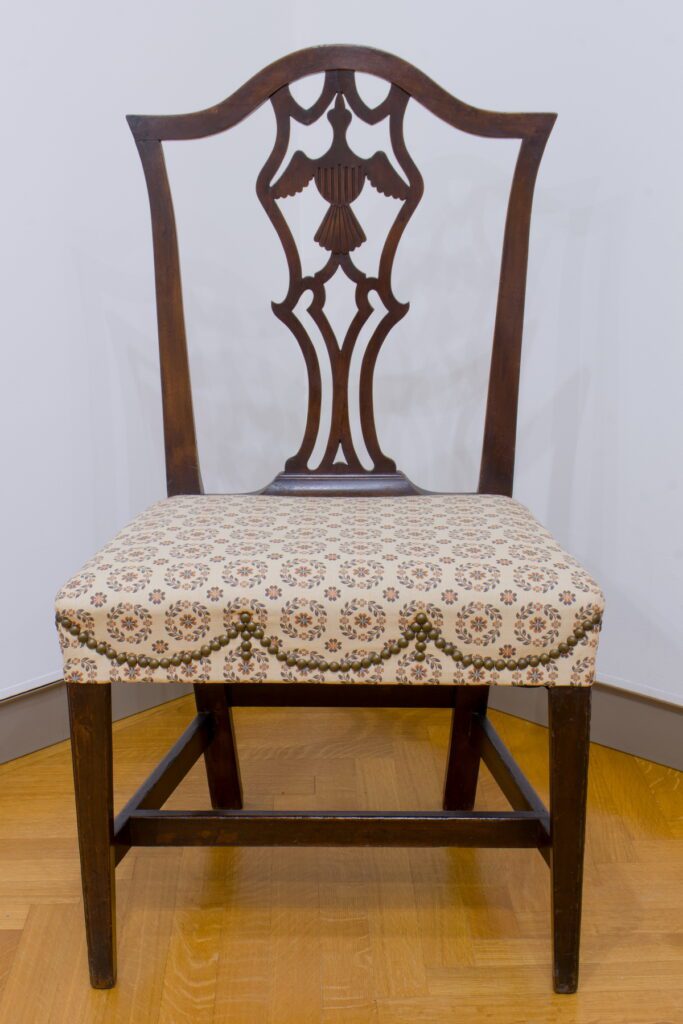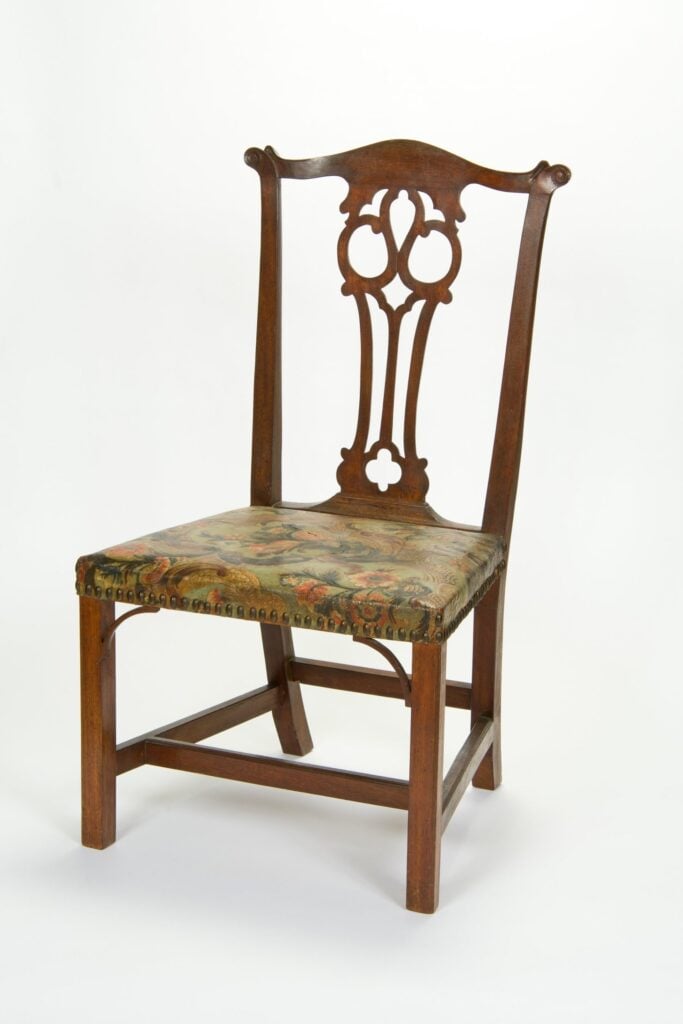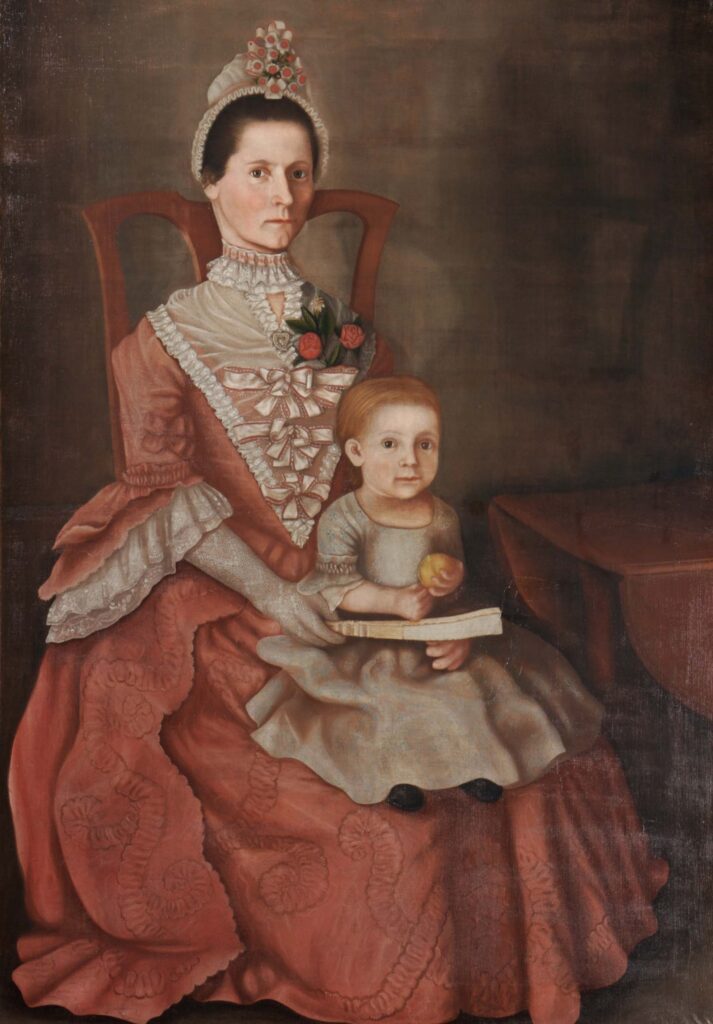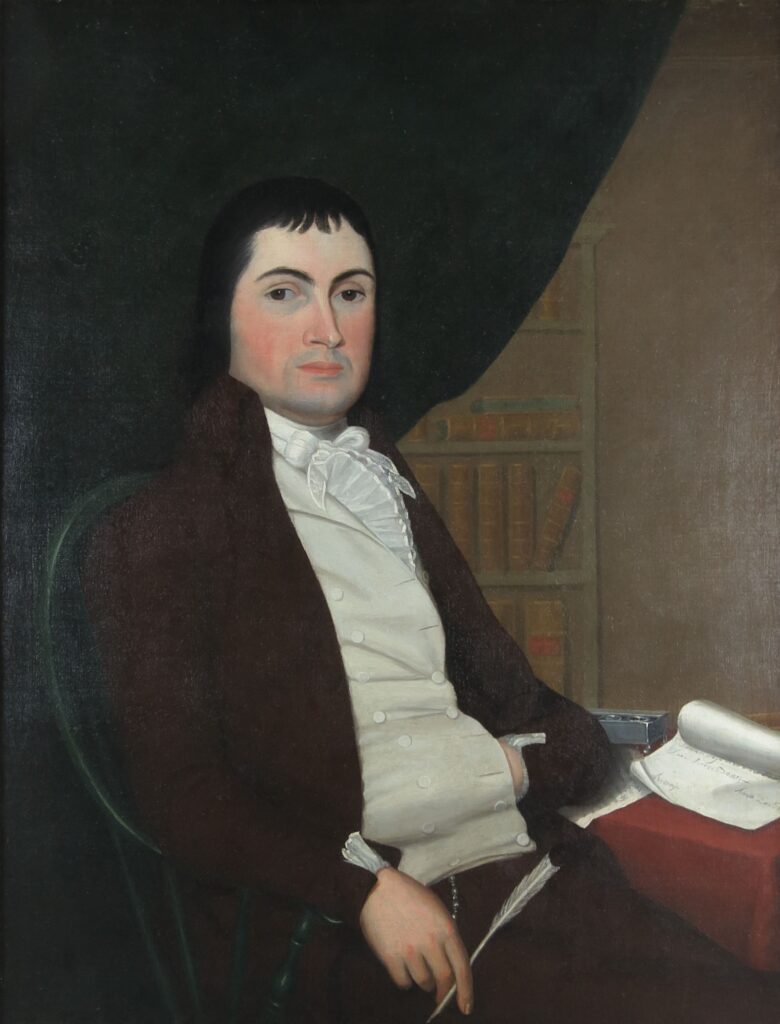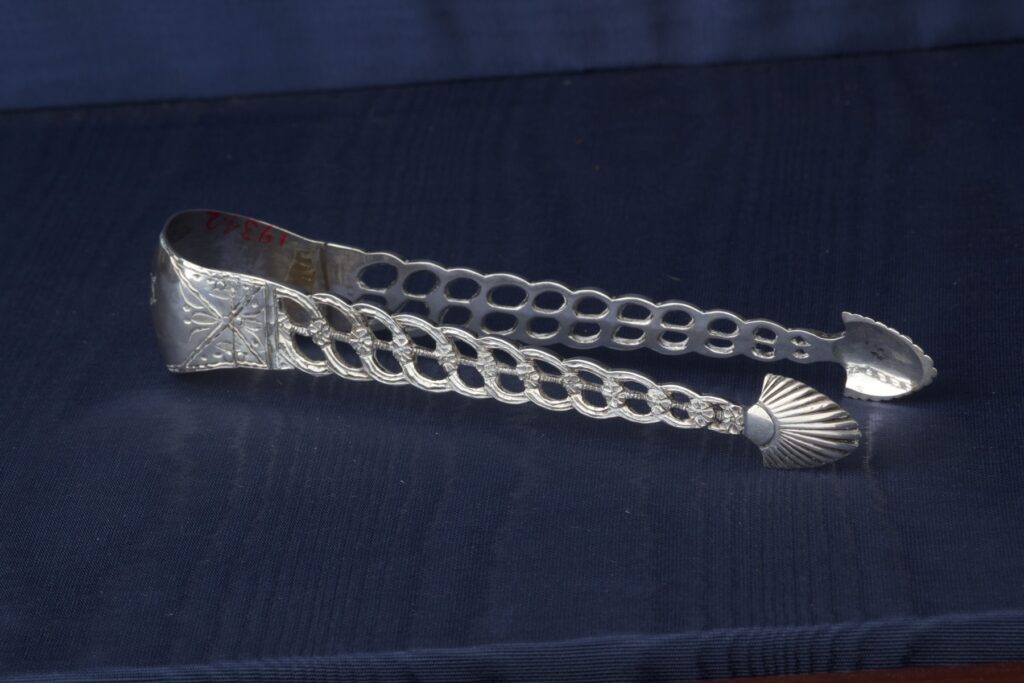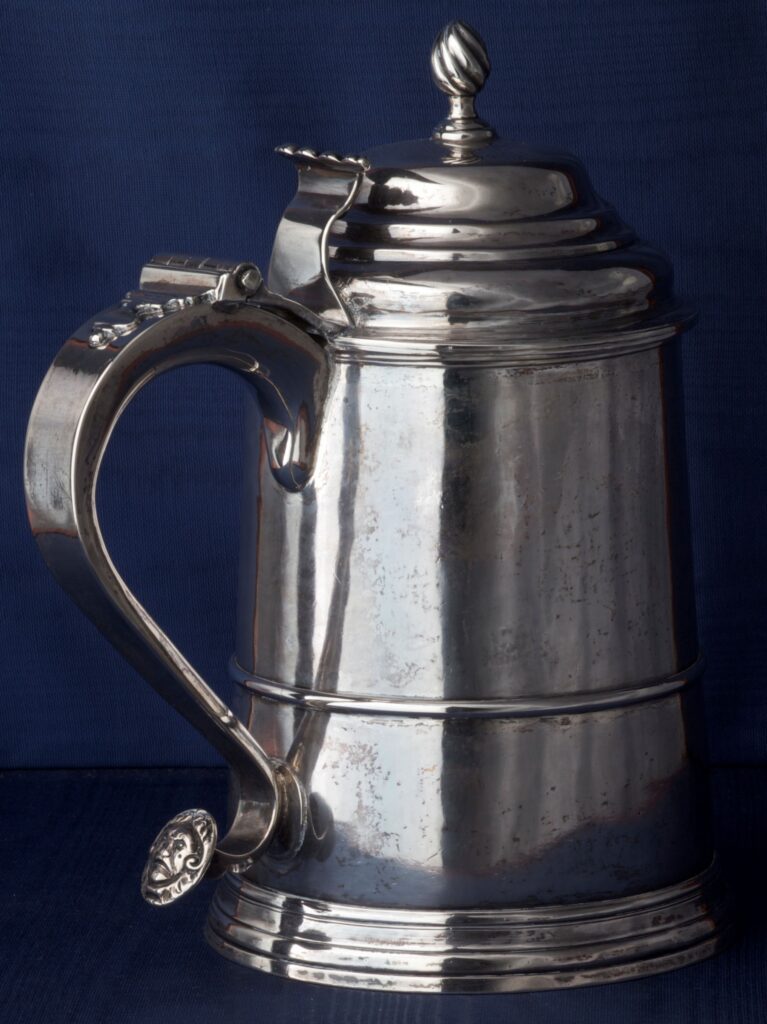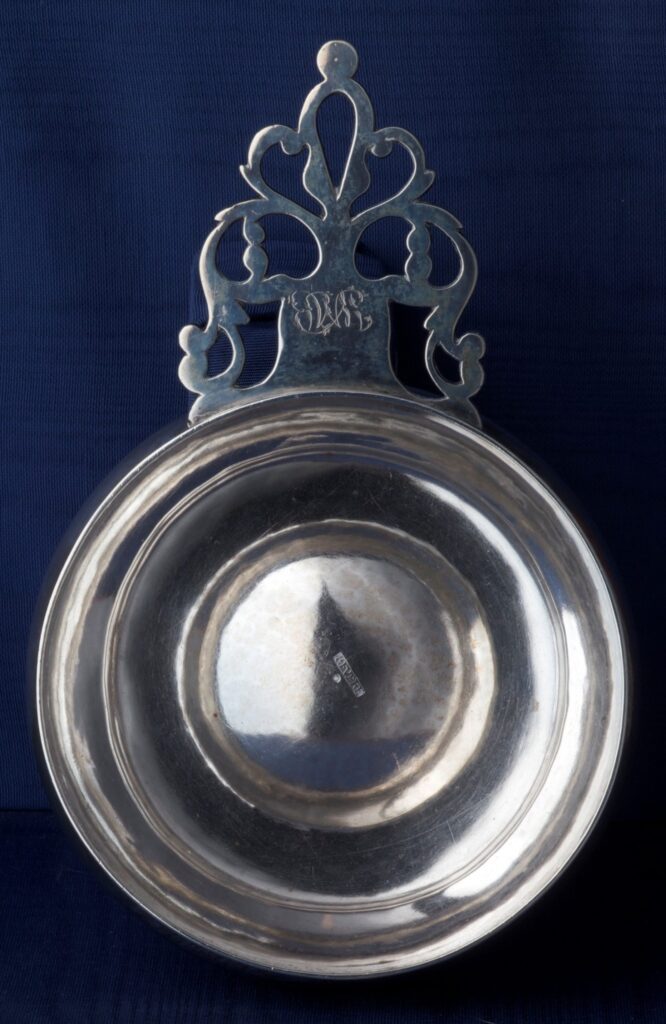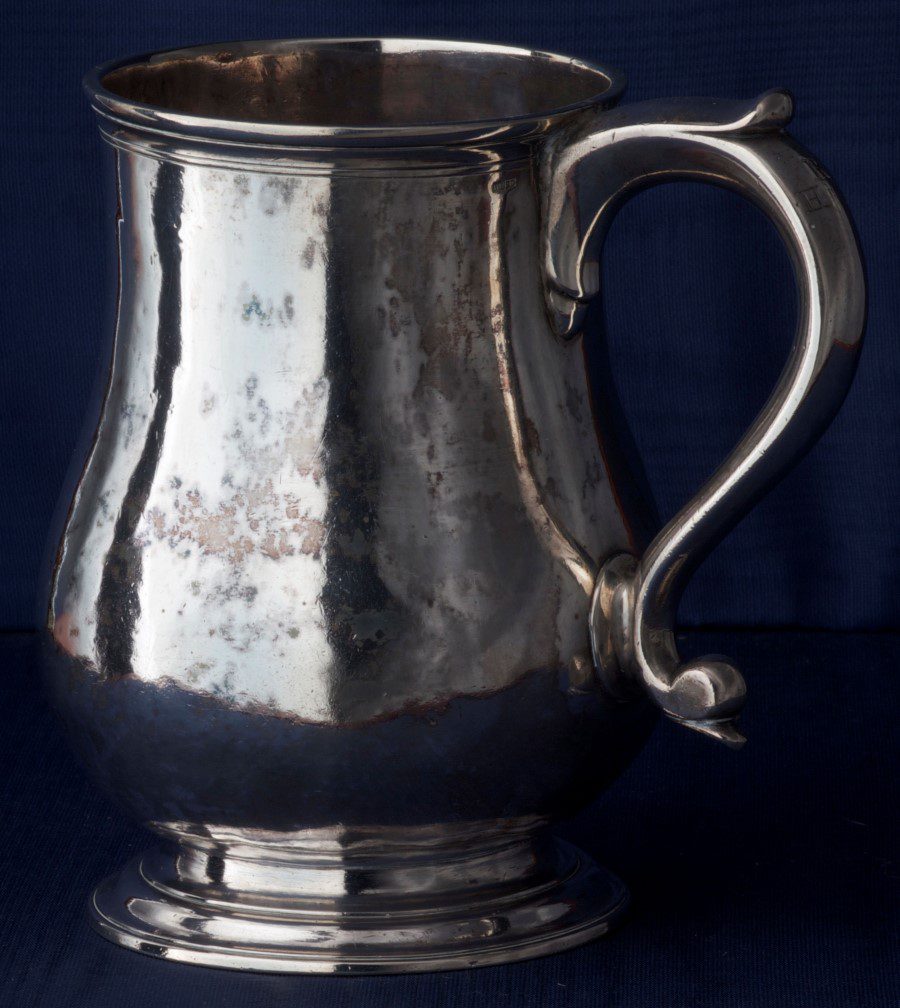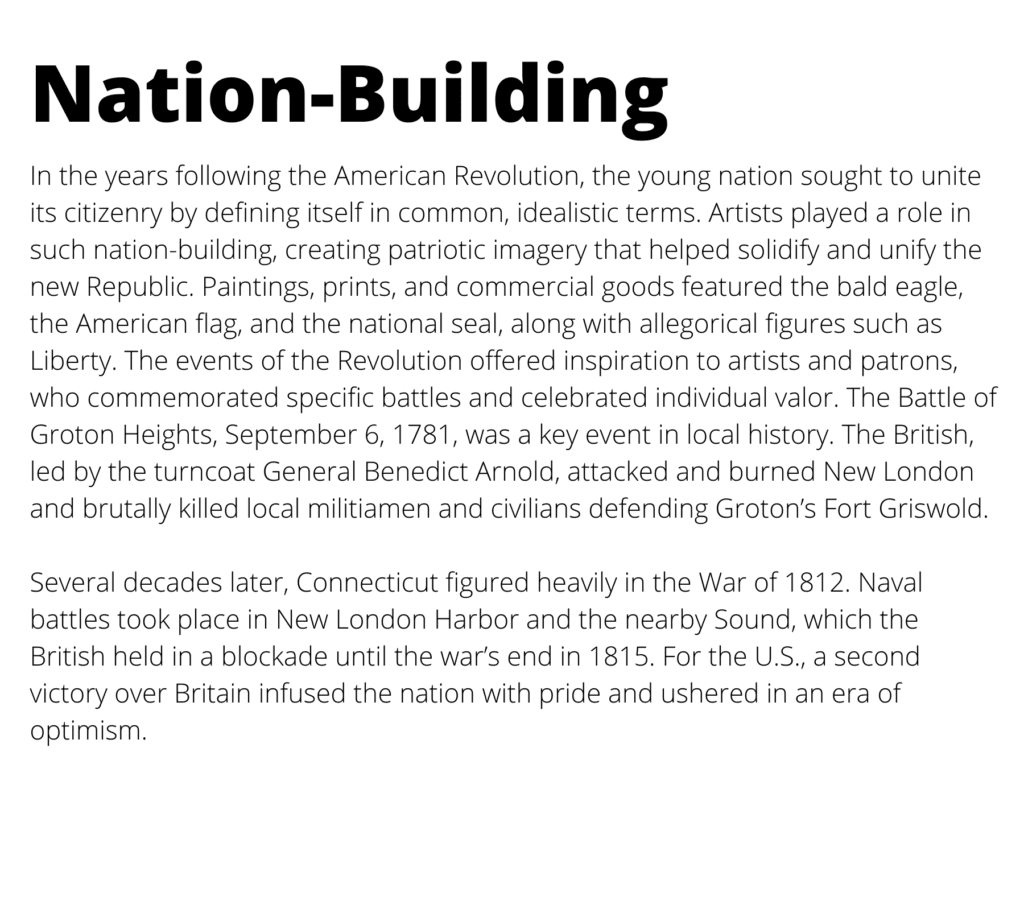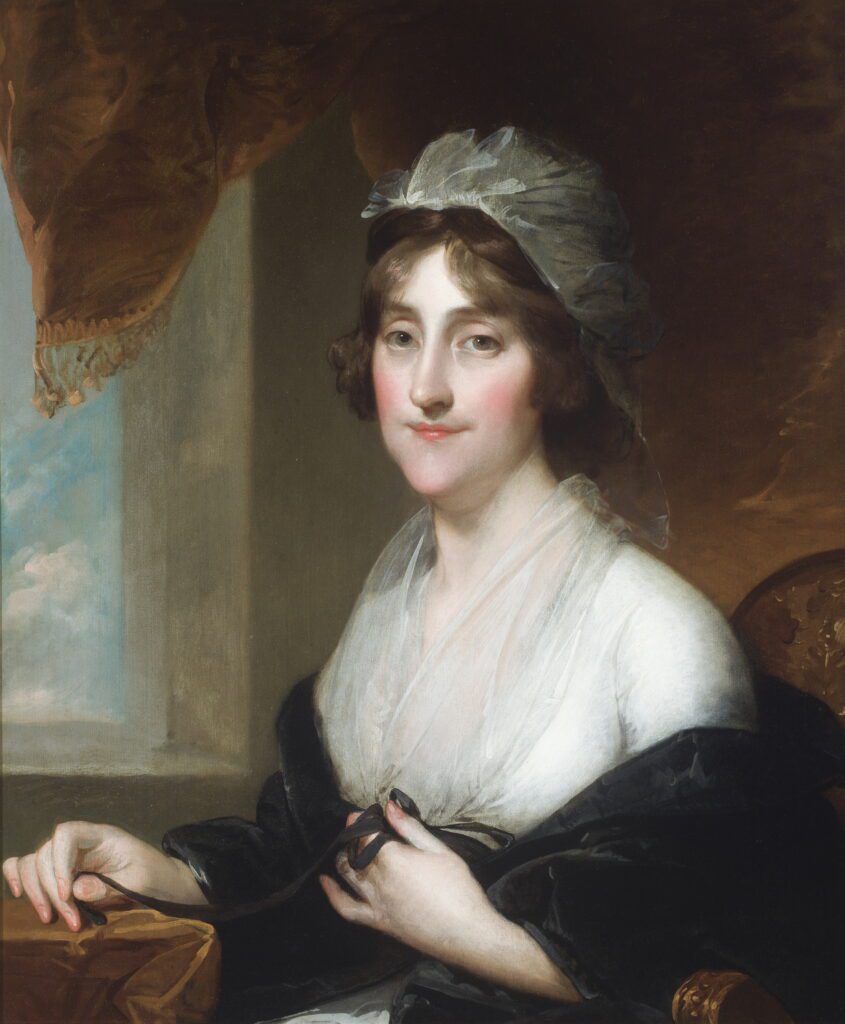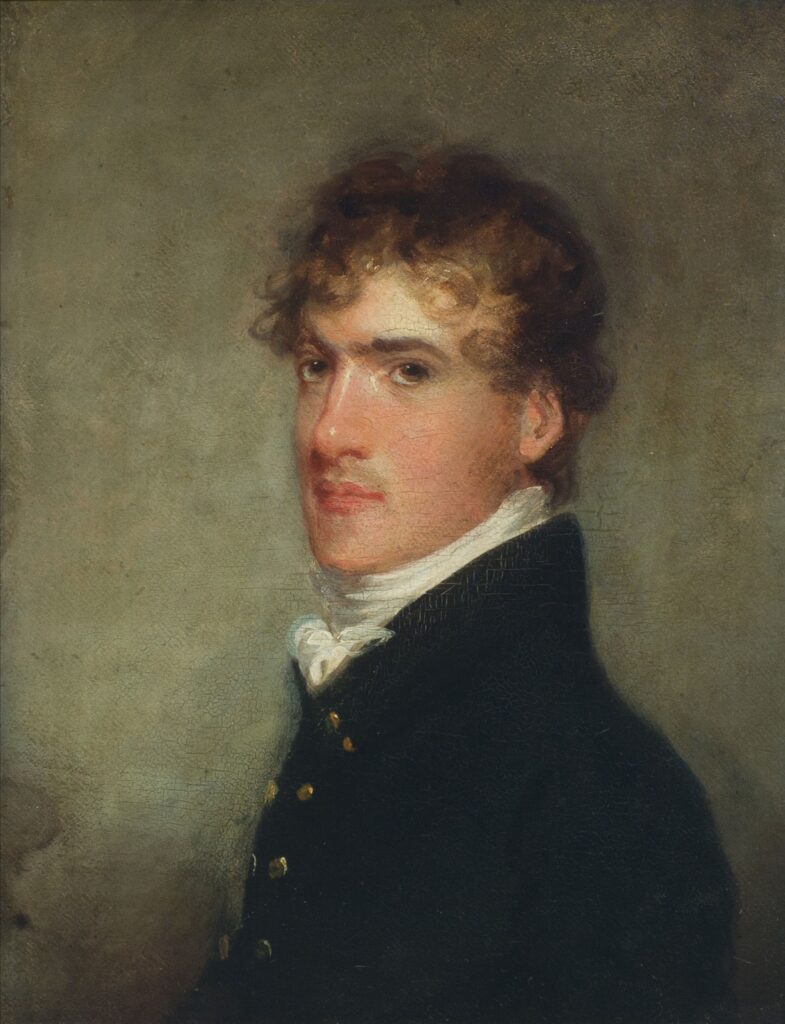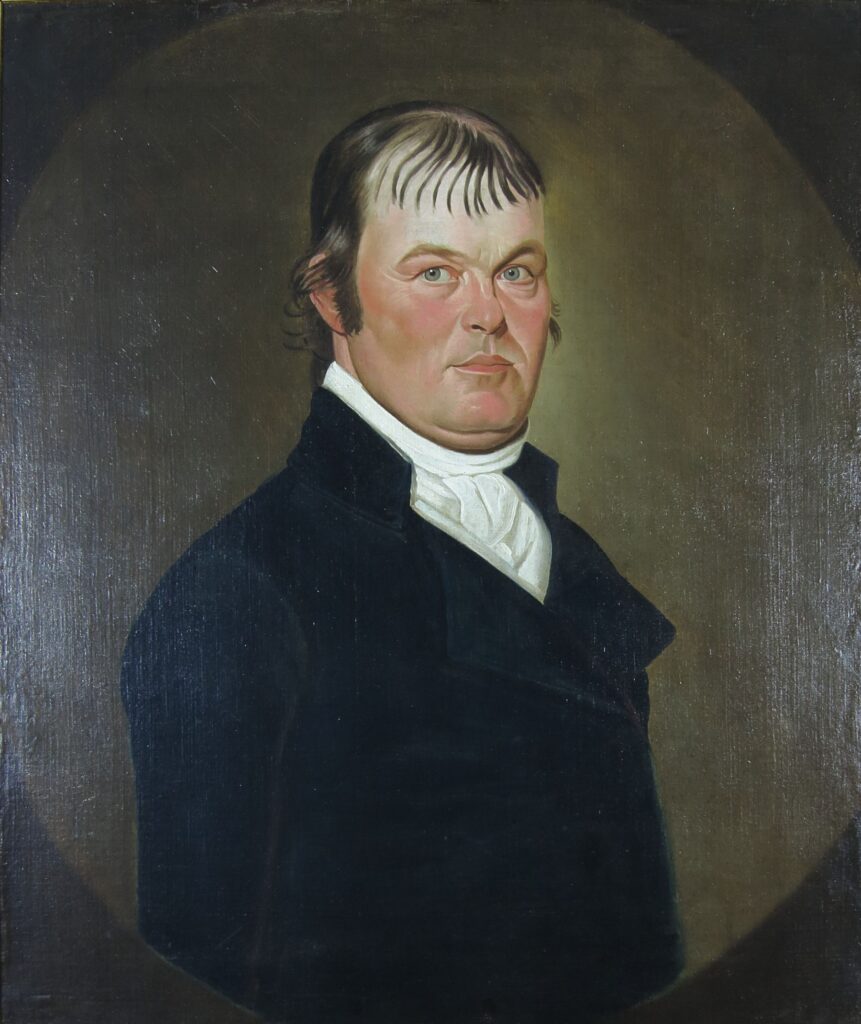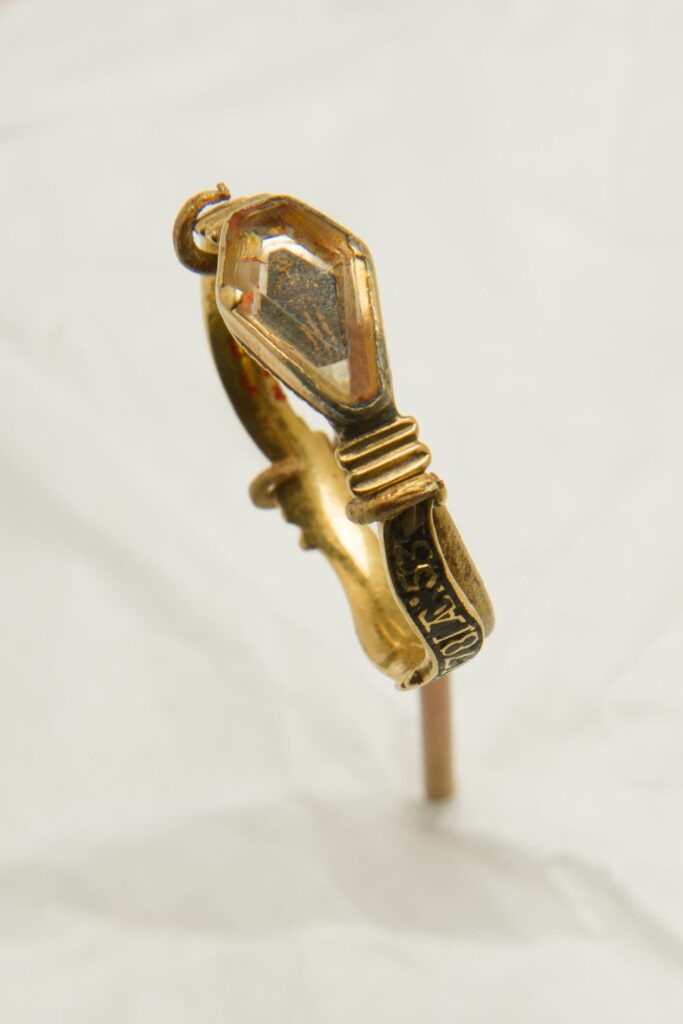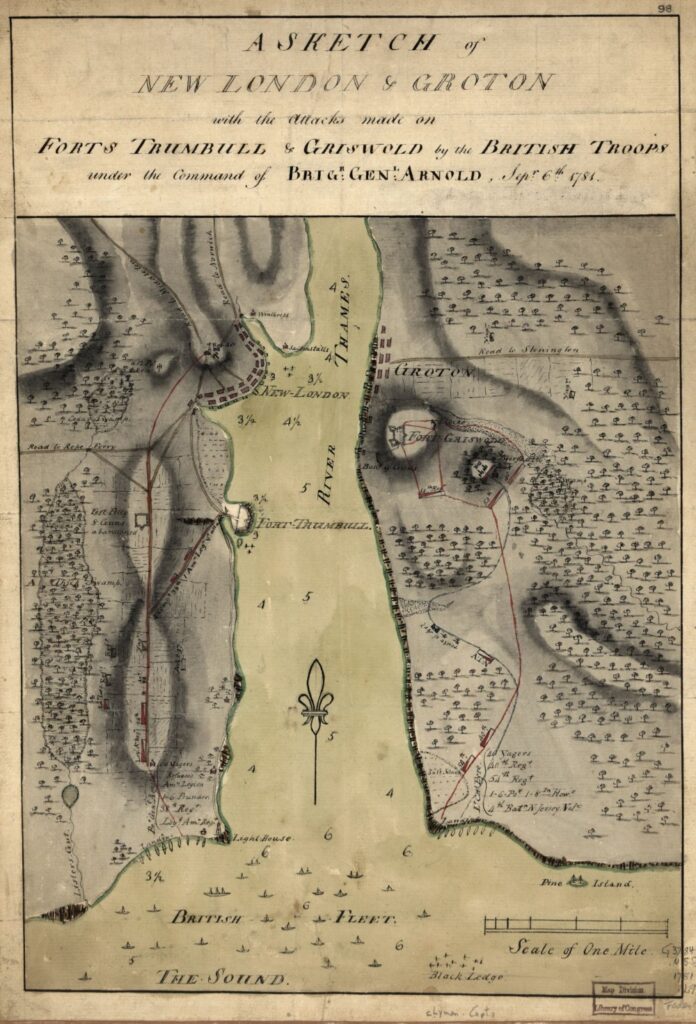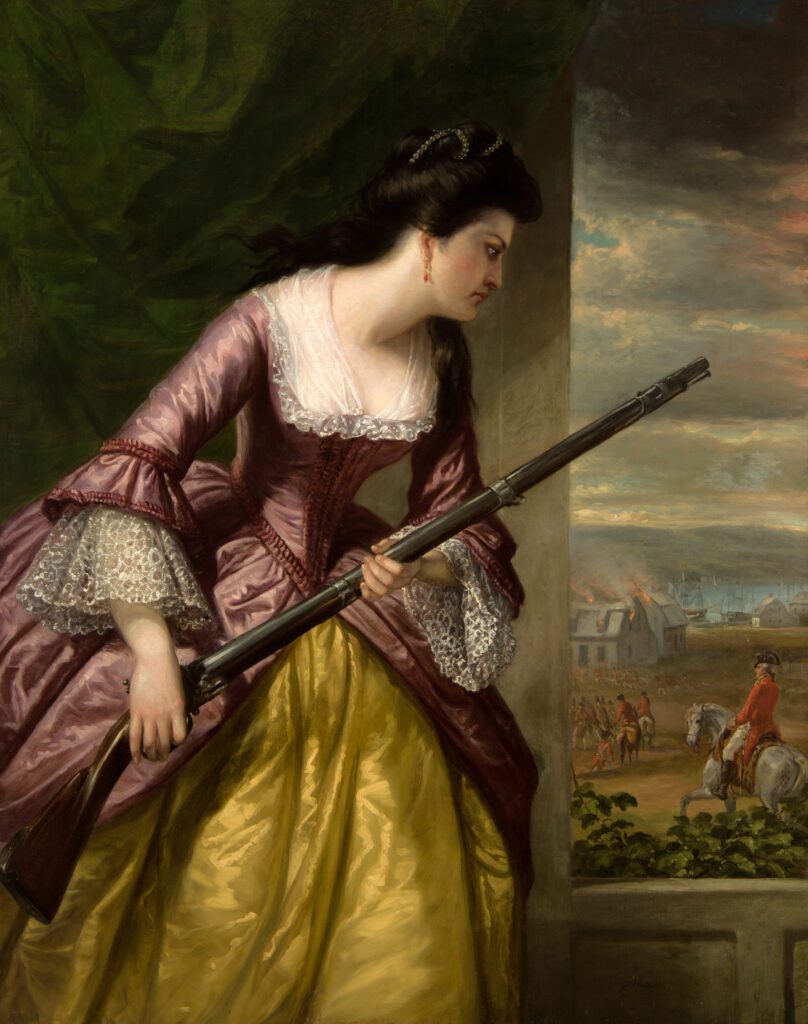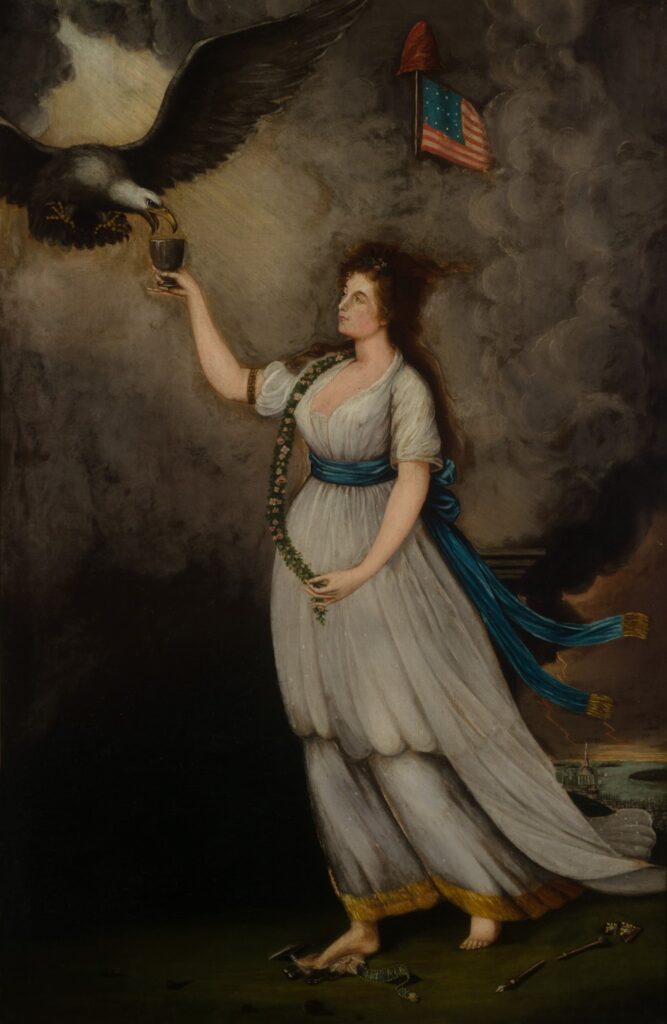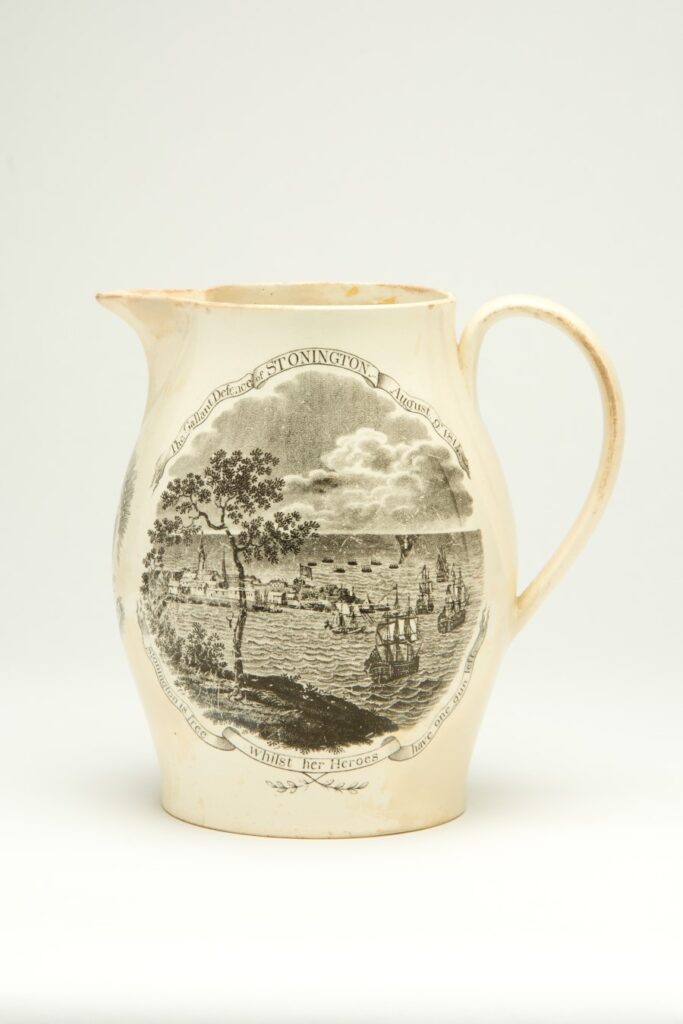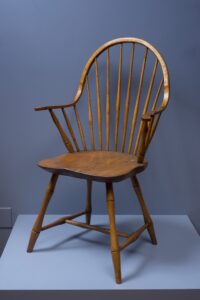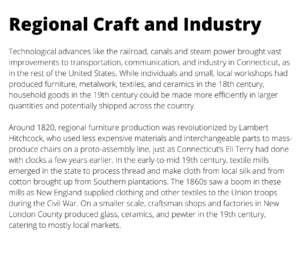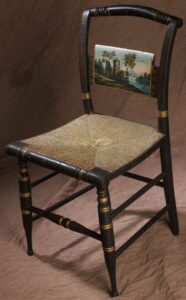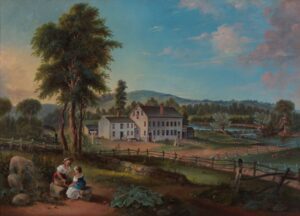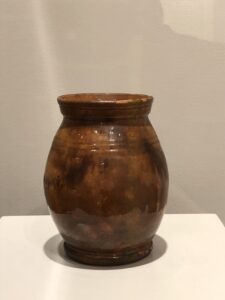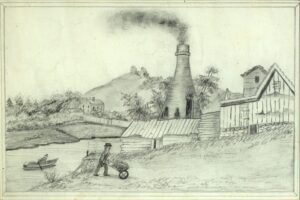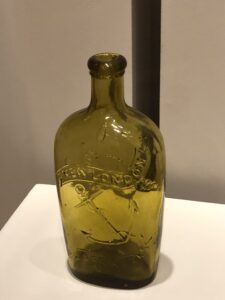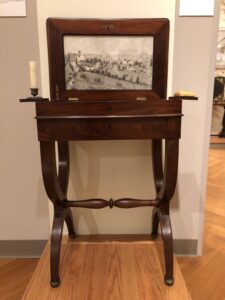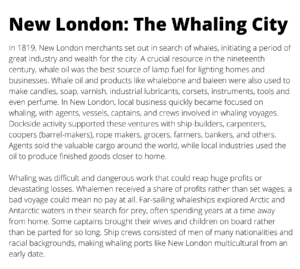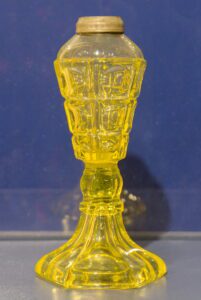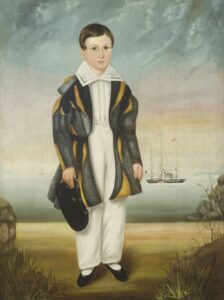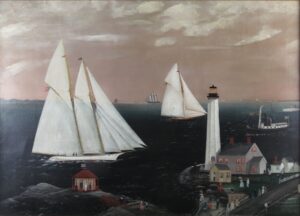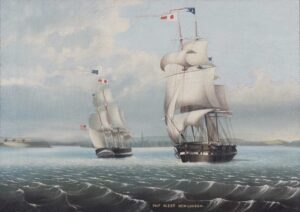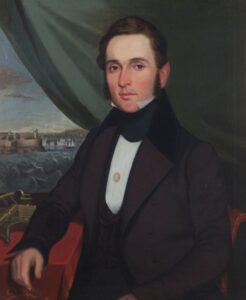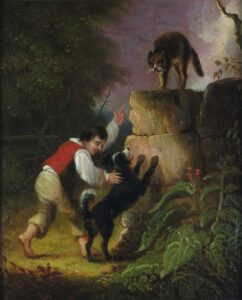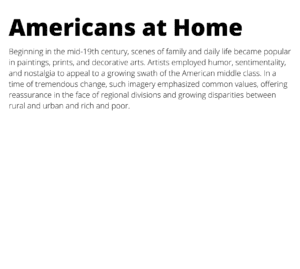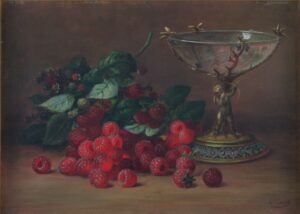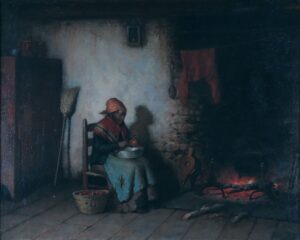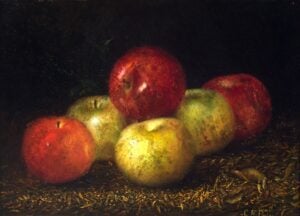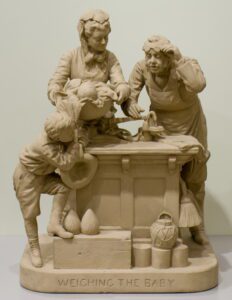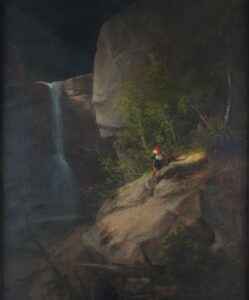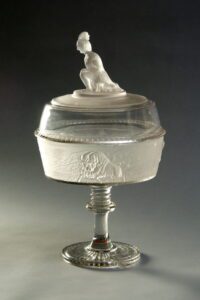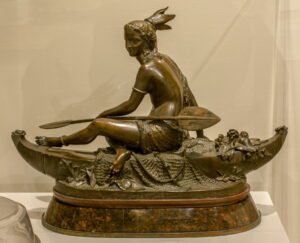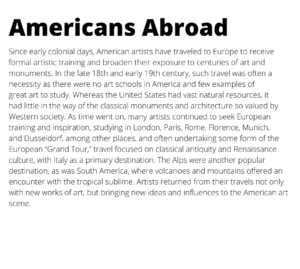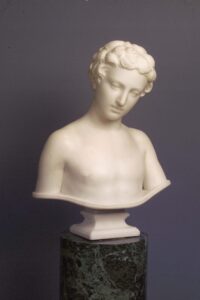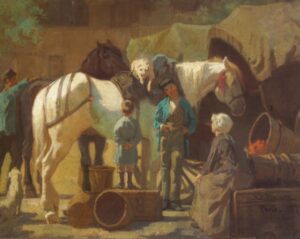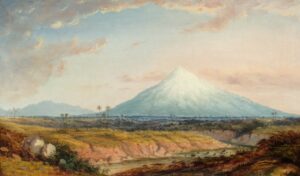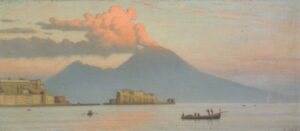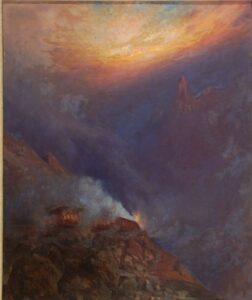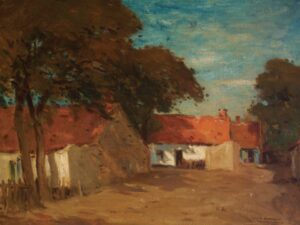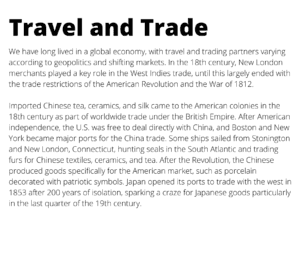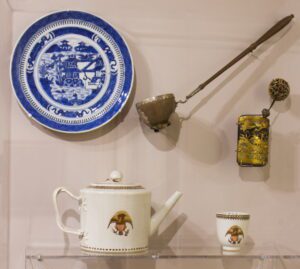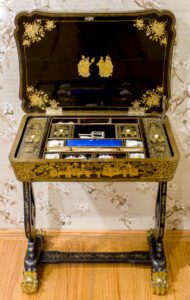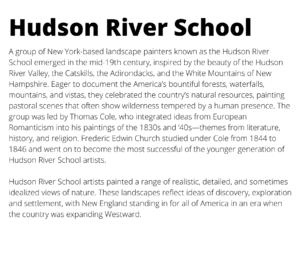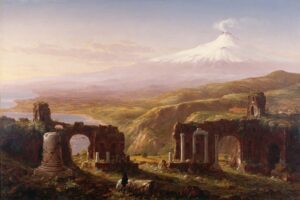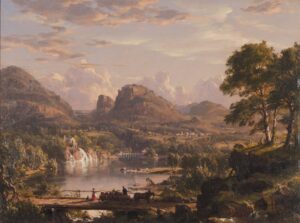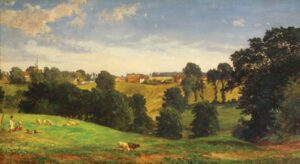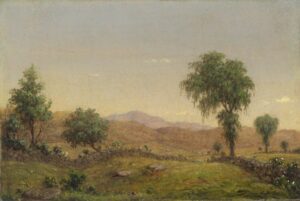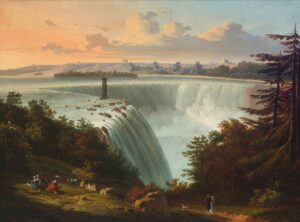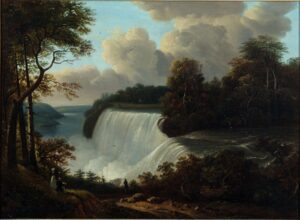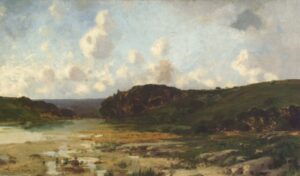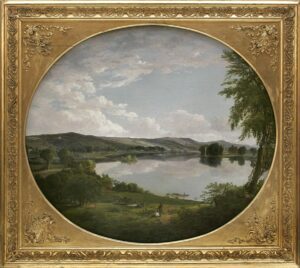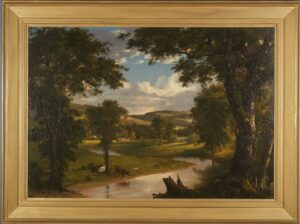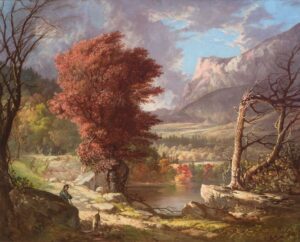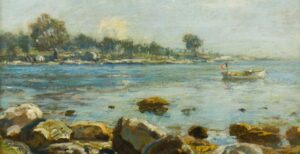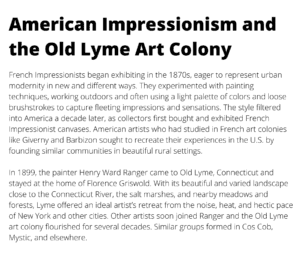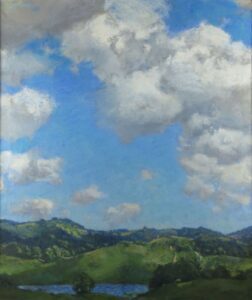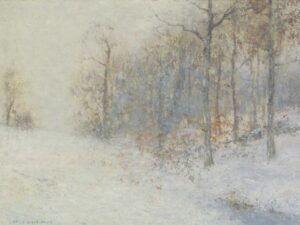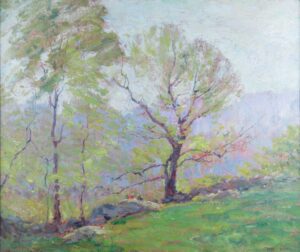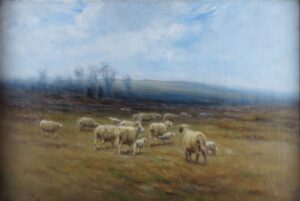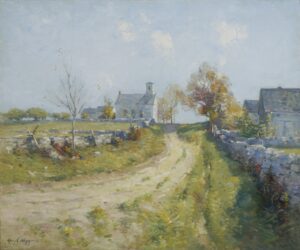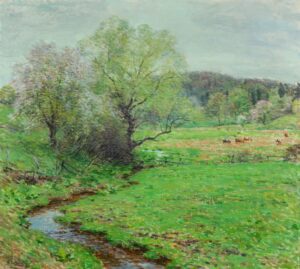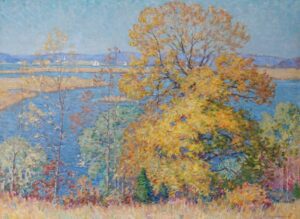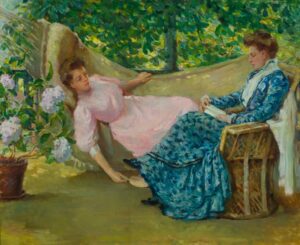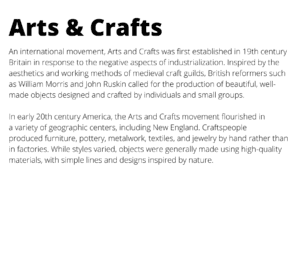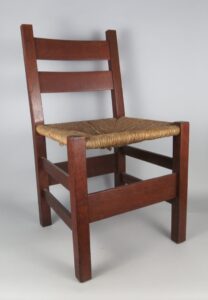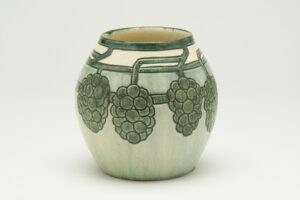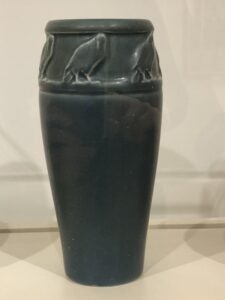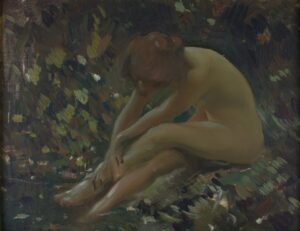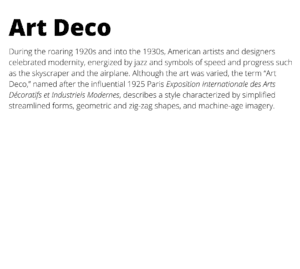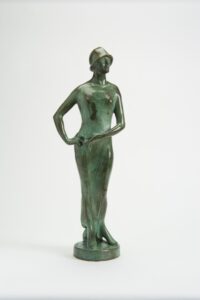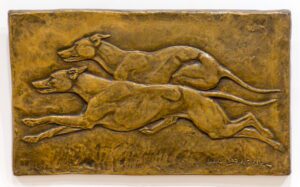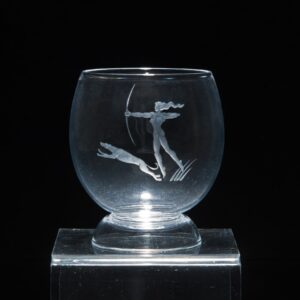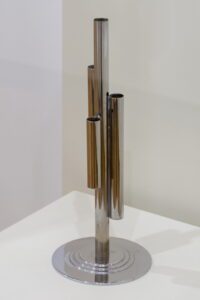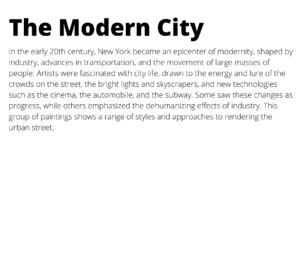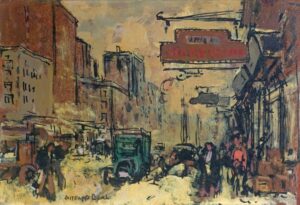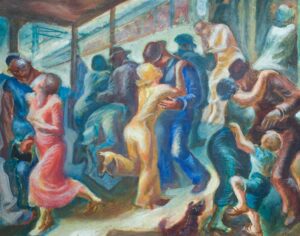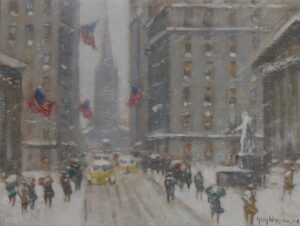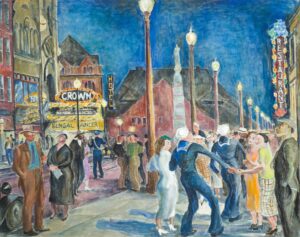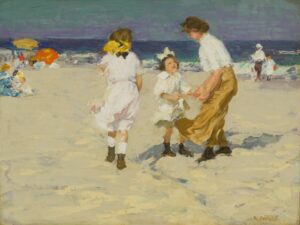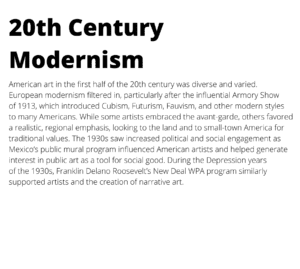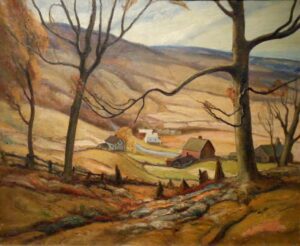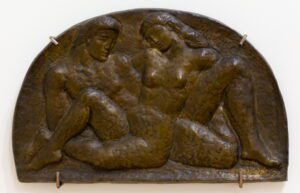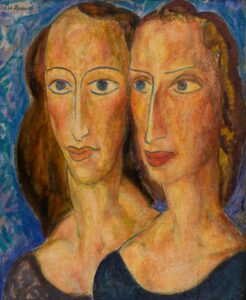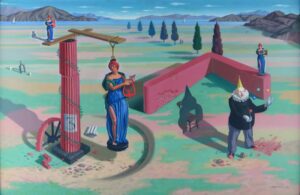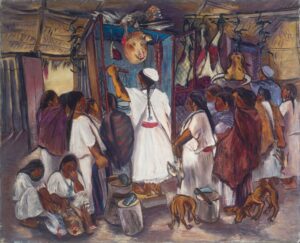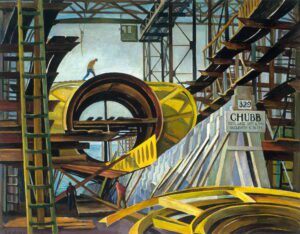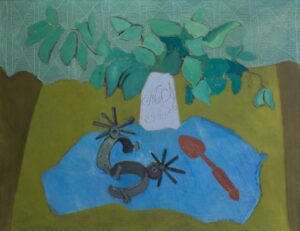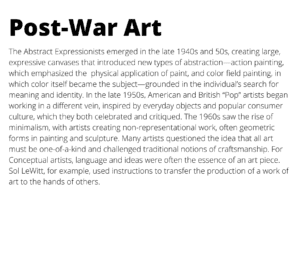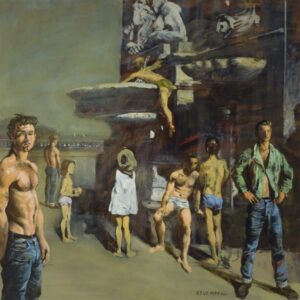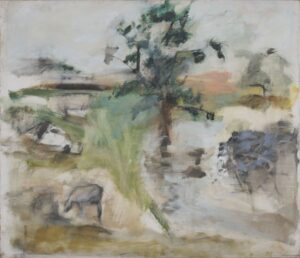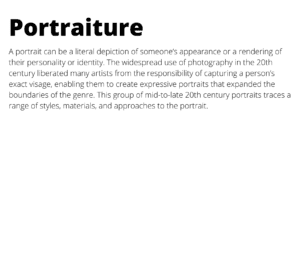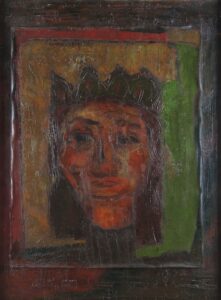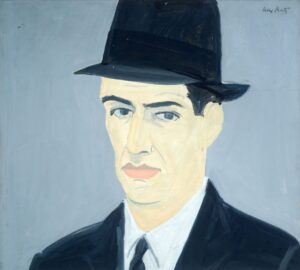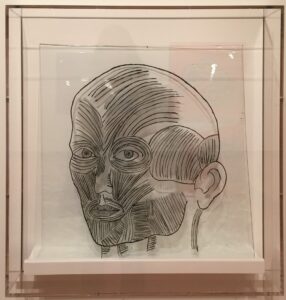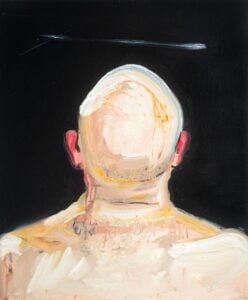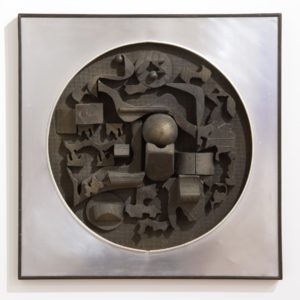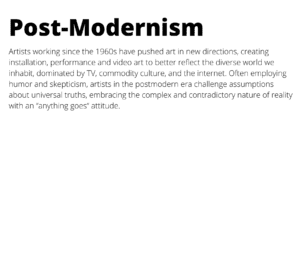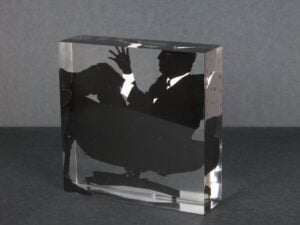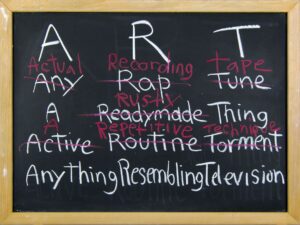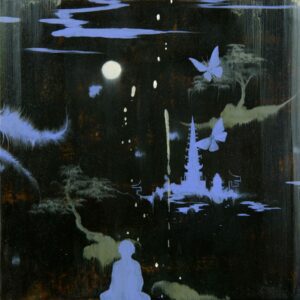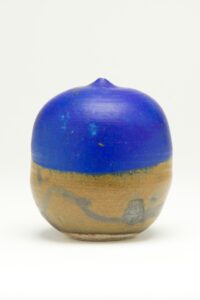In 1926, lifelong New London resident Harriet Upson Allyn passed away, and left funds to create a museum for the community in memory of her father, Captain Lyman Allyn (1797–1874). Lyman Allyn had commanded a whaling ship by the age of 21, founded a school for boys in New London in 1817, and subsequently found great success in business, with interests in whaling, banking, insurance, and the railroad. The Lyman Allyn Museum opened in 1932 in a beautiful neoclassical granite building designed by the renowned architect Charles A. Platt.
American Perspectives celebrates the arts of America from colonial times through the 20th century, often through the lens of Connecticut and specifically New London County. Exploring fine and decorative art through three centuries, American Perspectives highlights some of the Lyman Allyn’s finest works and most intriguing stories, bringing focus to the unique character of the region and its place in the wider world.
The 18th Century
New London’s deep water harbor has driven the regional economy since colonial times, connecting southeastern Connecticut to the broader Atlantic world. In the 18th century, local shipping merchants specialized in the West Indies trade, exporting livestock and food to Caribbean plantations in exchange for sugar, molasses, and rum. Economic growth and stability in the second half of the century enabled colonists to acquire a greater range of household goods—textiles, silver, glass, ceramics, furniture, and paintings among them. Some goods were imported, while others were produced in the home or by craftsmen and artists, whose work and skill expanded to meet increasing demand. The Tea Table and the painting of Sarah Deshon (from the same family) tell a local story, showing how the Deshons of 18th century New London cemented their status and wealth from trade with objects that conveyed their social and economic standing.
Connecticut played a key role in the American Revolution, as political tension over taxation and colonial governance led to war with Britain. With the British headquartered in New York City, New London’s harbor was an ideal site from which to initiate naval attacks on British loyalists. New London’s privateering (the use of authorized private ships to attack and loot enemy ships) prompted British troops to retaliate, burning New London in the Battle of Groton Heights on September 6, 1781.
Daniel Huntington’s portrait of Abigail Dolbeare Hinman, 1854–56, recreates an episode from this event, showing Hinman standing with her musket in hand, attempting to shoot Benedict Arnold, who can be seen through the window, sitting on horseback.
The 19th Century
As the young nation sought to define itself in the first half of the 19th century, artists created objects and paintings to unite Americans around common ideals of liberty, justice, and hope for the future. Some objects were overtly patriotic, while others were less direct. Hudson River School landscapes, for example, expressed pride in the nation’s natural resources, with scenes from the woods, rivers, and mountains of the northeast standing in for all of America, suggesting the promise of land, the spread of civilization, and the unique, almost spiritual quality of the landscape.
Artists also traveled to Europe to study art and see the sights, painting mountains and classical ruins, as Thomas Cole did in his the majestic view of Mount Etna, drawing visual connections between the ideals of the newly minted American Republic and those of classical antiquity.
Steam power, the railroad, the telegraph, and improved roads and canals ushered in the age of industrialization, facilitating the mass production and transportation of goods. Whereas many objects had been crafted by hand in the previous century, the 19th century saw the rise of goods made with machines. Connecticut mills and factories produced munitions, tinworks, clocks, furniture, and textiles, among other things. Early factories were fueled by whale oil, an important industrial lubricant and lamp fuel supplied by whaling, the most significant part of New London’s economy for several decades.
Isaac Sheffield, who painted portraits of many local whaling captains, portrayed five-year-old James Francis Smith shortly after his return from a long whaling voyage in 1837 with his father, New London whaling captain Franklin Smith. They had gone to Desolation Island in the South Seas, and his portrait shows him wearing a penguin skin coat, with the Chelsea, the ship his father had captained, in the background.
The United States grew dramatically over the course of the 19th century, expanding westward and growing in population with waves of immigration. Regional differences and tension over slavery and states’ rights erupted in the U.S. Civil War (1861–65). In New London County, a number of textile mills were built to supply the Union troops. After the war, New England’s mills became an industrial powerhouse, employing and sustaining entire towns.
The 20th Century
In a period of tremendous growth and change, artists looked forward and back, charting new terrain with abstraction, while revisiting their artistic roots through innovative approaches to traditional genres such as landscape, still life, and portraiture.
The early 20th century was a time of rapid expansion and industrialization fueled in part by waves of immigration. A decade of exuberance followed World War I before the stock market crash of 1929 initiated the Great Depression of the 1930s. Abstraction and European modernism filtered into American art, while a realistic, regional style simultaneously held sway, resulting in a mix of subjects and styles.
Many artists were drawn to the energy and bustle of the modern city, awash in crowds and transformed by industry, skyscrapers and the automobile. The city could be intense, noisy, and oppressive, however, and some artists retreated during the summer to Connecticut art colonies to paint peaceful landscapes and scenes of leisure. Guy Wiggins drew inspiration from both the city and the country, painting impressionistic views of New York in winter, as well as scenes such as Church on the Hill, ca. 1910–12, showing country life in Old Lyme, Connecticut.
Beatrice Cuming’s painting, Chubb, shows a submarine being built in Groton, Connecticut during World War II. Cuming’s canvas affirms New London’s long connection to the sea and celebrates industry at a time when the nation was consumed with the war effort.
Post-War Art
In the prosperity and growth of the post-World War II era, a multiplicity of artistic trends and styles arose, dominated by abstraction. New York emerged as the center of the international art world. The 1960s and ‘70s witnessed cultural upheaval as people of color and women sought equal rights and many protested the U.S. involvement in the Vietnam War. The prevalence of advertising and mass media led artists to explore new themes, performance, and technology, questioning the definitions of art and the idea of originality.
Since the 1980s, the postmodern art world has been in flux, and issues of gender, race, politics, and cultural identity have been at the fore in our globalized and technology-driven world. In A.R.T. (in the new world order), 1994, African-American artist Willie Cole uses text on a blackboard to create an acrostic poem of sorts, using various word associations and erasure to define and comment on art and culture.

